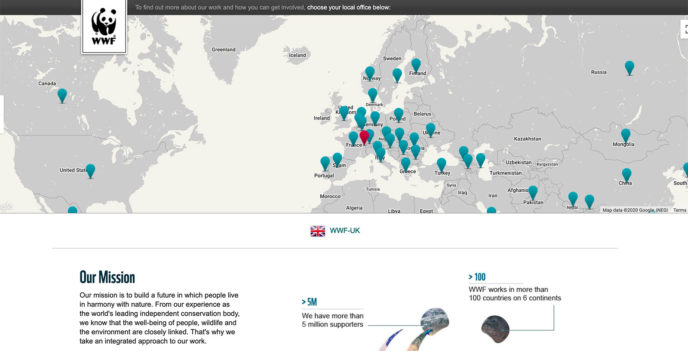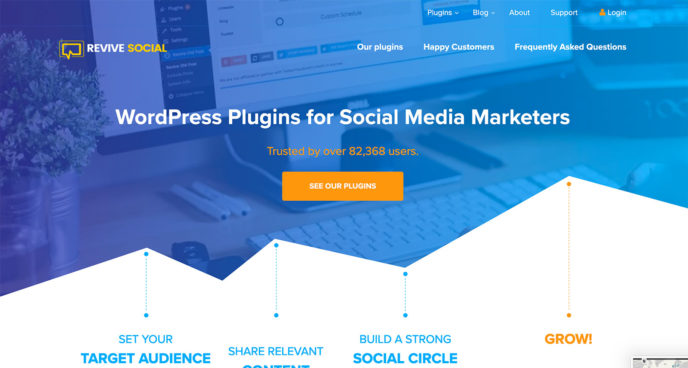Do You Really Need The .com Domain Name? Plus Other Options!
- By
- Last updated:
- Leave your thoughts
There are more than 1,500 domain extensions available today — including specialized extensions for numerous industries, interests and website types — that all tell users something different about your site. So, why do you need the .com domain? Do you really need it at all?
In this guide, I’ll explore the benefits of using a .com domain, along with why you may want to consider a different extension. But first, let’s establish what a domain extension — otherwise known as a top-level domain — actually is.
↪️ Note: looking to make a website with WordPress and not yet decided which hosting to choose? Check out this post of ours comparing three of the most popular choices: Bluehost, GoDaddy and SiteGround.
Let’s dive in…
Table of Contents
What Are Domain Extensions?
Domain extensions are used to categorize websites. In professional web development spaces, they’re often referred to as top-level domains.
Despite this name, there’s no level system for domain extensions. All domain extensions are top-level domains (TLDs). Your browser will treat them the same way, and Google has also stated that no preferential treatment is given to .com or any other TLD.
There are, however, three types of top-level domains:
- Generic Top-Level Domains (gTLDs) — these are domain extensions that can be registered anywhere in the world. This includes the commonly used .com, .org and .net, as well as less-common extensions, such as .info and .io. The vast majority of domain extensions are gTLDs.
- Country Code Top-Level Domains (ccTLDs) — as the name suggests, these extensions can only be registered by residents of a specific country. Some commonly used ccTLDs are .ca, .co.uk and .ru.
- Restricted Top-Level Domains — these are domain extensions that can only be used by specific types of institutions, such as .edu for post-secondary educations. Because of the restrictions, we won’t be discussing these TLDs in the bulk of this article.
New TLDs are added occasionally, and you can find a full list of domain extensions here.
Your Brand and .com
So, if your browser and search engines treat .com the same as any other TLD, why do you need the .com?
The answer lies in your branding. A .com domain is recognizable and lends your brand credibility. The .com also indicates that you’re open to doing business with people from anywhere in the world.
Your website is also easier to remember when you use the .com. If people remember the name of your brand but don’t have your website URL, they’re probably going to type ‘yourbrand.com’ into their address bar. If your website is at the .com address, they’ll find themselves in the right place.
The Dangers of Leaving the .com Available
As we mentioned before, if people remember the name of your brand but don’t remember the URL, they’ll often attempt to go to ‘yourbrand.com’. If your brand isn’t there, they may assume you have no website at all and give up the search — and this is only one of the dangers of leaving the .com associated with your domain name available.
Another, more significant danger is that somebody else will use the .com domain. This may be a competitor, in which case they’ll land your clients, or it may be an entirely different type of business, leading to confusion about what you do. If the site is involved with something risky, such as adult entertainment or gambling, it could even damage your reputation.
Finally, if you choose to invest in the .com domain later on, you may find that someone has bought it for the specific purpose of reselling. This will require a longer, more involved purchase process, and will likely also cost you more money. For this reason, we recommend buying the .com domain, even if you primarily use a different extension.
What If the .com Address Is Already Taken?
You may be researching this question because the .com for the domain you want is already taken. If the domain is in active use, you probably won’t be able to buy it. So, what do you do?
The best option is often to choose a different domain. And by this I mean choose a completely different domain name instead of using the same name with a different TLD. There are two reasons for this:
- Companies often trademark their names. If you use the same name as an existing company, you risk running into legal trouble with the original company. The name doesn’t need to be trademarked either; companies can still take you to court via common law. The bigger the company, the more likely you are to face this problem.
- Many users, if they can’t remember your TLD, will automatically search for the name of your company with ‘.com’ attached. If this domain belongs to another company, these people will end up on the wrong site. If you’re lucky, they will then go to Google to look for your business. However, these people may assume you’ve gone out of business and not go looking for you at all. This could result in a large amount of lost business.
To create a different domain name with a similar feel, consider adding a word, subtracting a word, or changing the spelling of a specific word in your domain. There are endless ways to create a unique domain, including the use of domain name generators.
If the domain isn’t in active use, the person who owns it likely bought it with the intention of selling it down the line. There are several platforms that allow you to buy a domain that’s taken. You’ll need to contact the person who owns the domain, then purchase it through the resale platform of their choice.
So, What’s the Purpose of Other TLDs?
If using the .com is the best way to make your brand easy to find, why consider other TLDs at all?
The .com extension tells people your domain is a website, but other top-level domains can tell people something more specific about your brand. To show you how this works, let’s take a look at some domains with an extension other than .com.
Local Businesses
First up is STEAMLabs, a Canadian non-profit that teaches people how to become Makers, with an emphasis on tech-based programs for youth. All of its programs are run out of the city of Toronto, so they use a .ca domain extension.
If your business only operates in one country, or if your major selling point is that your products are created in a specific country, you may want to use the appropriate ccTLD.
Nonprofit Organizations
The next site we want to consider is the website for the World Wildlife Foundation. The World Wildlife Foundation is a non-profit organization, rather than a traditional company, so it uses the .org extension.

The .org extension is not a restricted TLD, but it is primarily used by non-profits. If your organization is a non-profit, you may want to take advantage of this association.
Specialized Industries
Finally, let’s consider the Revive.Social website. This website exists to sell social media plugins, and uses the extension .social. The domain, Revive Social, also serves as the name of the blog hosted on the site. By using the extension as part of the name, Revive Social makes itself more memorable.

There are TLDs for every type of website imaginable. Here are some of the most memorable:
- .blog
- .info
- .dev
- .tech
- .shop
- .store
- .fashion
- .health
- .io
You can use one of these domain extensions to keep the purpose of your company at the forefront of your customers’ minds — or even make it part of your website name. However, it’s important to consider what other companies in your industry are doing. If nobody is using the industry-specific TLD, you may actually confuse potential customers with it.
What Do Different Top-Level Domains Cost?
The final consideration when choosing a domain extension is cost. Most TLDs cost roughly the same amount as .com extensions, but some are significantly more expensive. Others are significantly more affordable. And, of course, the cost also varies from one domain registrar to the next.
To give you an idea of what this looks like, we’re going to examine the costs of popular TLDs at two of the top registrars: Namecheap and BlueHost.
Namecheap
.com: $8.88 a year
.net: $12.98 a year
.org: $12.98 a year
.tech: $9.99 a year
.io: $32.88 a year
.info: $14.98 a year
BlueHost
.com: $11.99 a year
.net: $12.99 a year
.org: $8.99 a year
.tech: $4.99 a year
.io: $11.99 a year
.info: $11.99 a year
As you can see, the prices for various domain extensions rarely increase or decrease in cost by more than a few dollars. This means cost isn’t going to play a major role in your decision.
The Verdict: Do You Need the .com?
Google may not penalize you for using a different top-level domain, but we strongly recommend sticking with the .com anyway. Most people will search for you using the .com first.
If, for some reason, you choose a less common TLD, we recommend buying the .com address and making it redirect people to your website. This will prevent another company from taking the .com address and confusing your customers.
Finally, if the .com address you want is taken by an active site, consider choosing a different domain name. It may take a while to find the perfect unused domain, but the opportunities for clear, consistent marketing will likely be well worth the time invested.
Anything to add? Thoughts?




All comments are held for moderation. We'll only publish comments that are on topic and adhere to our Commenting Policy.